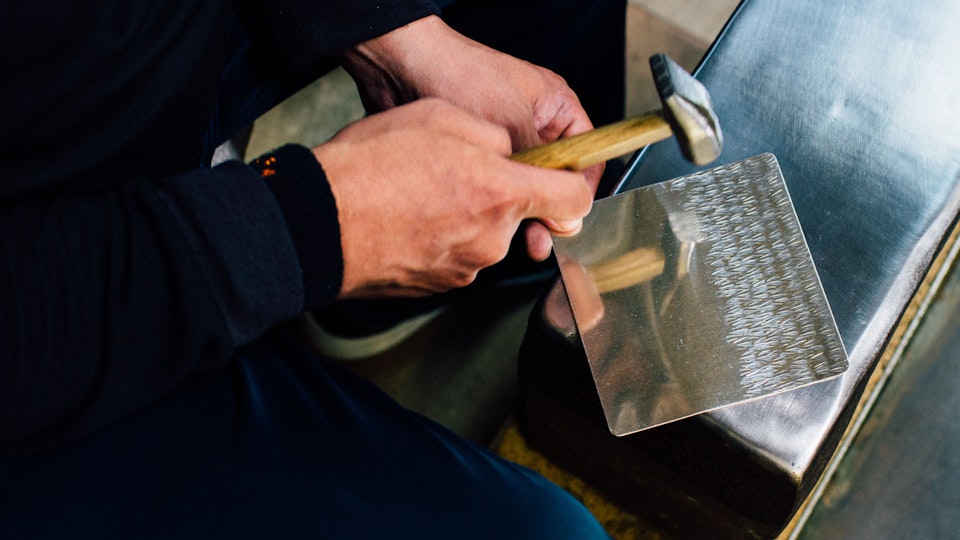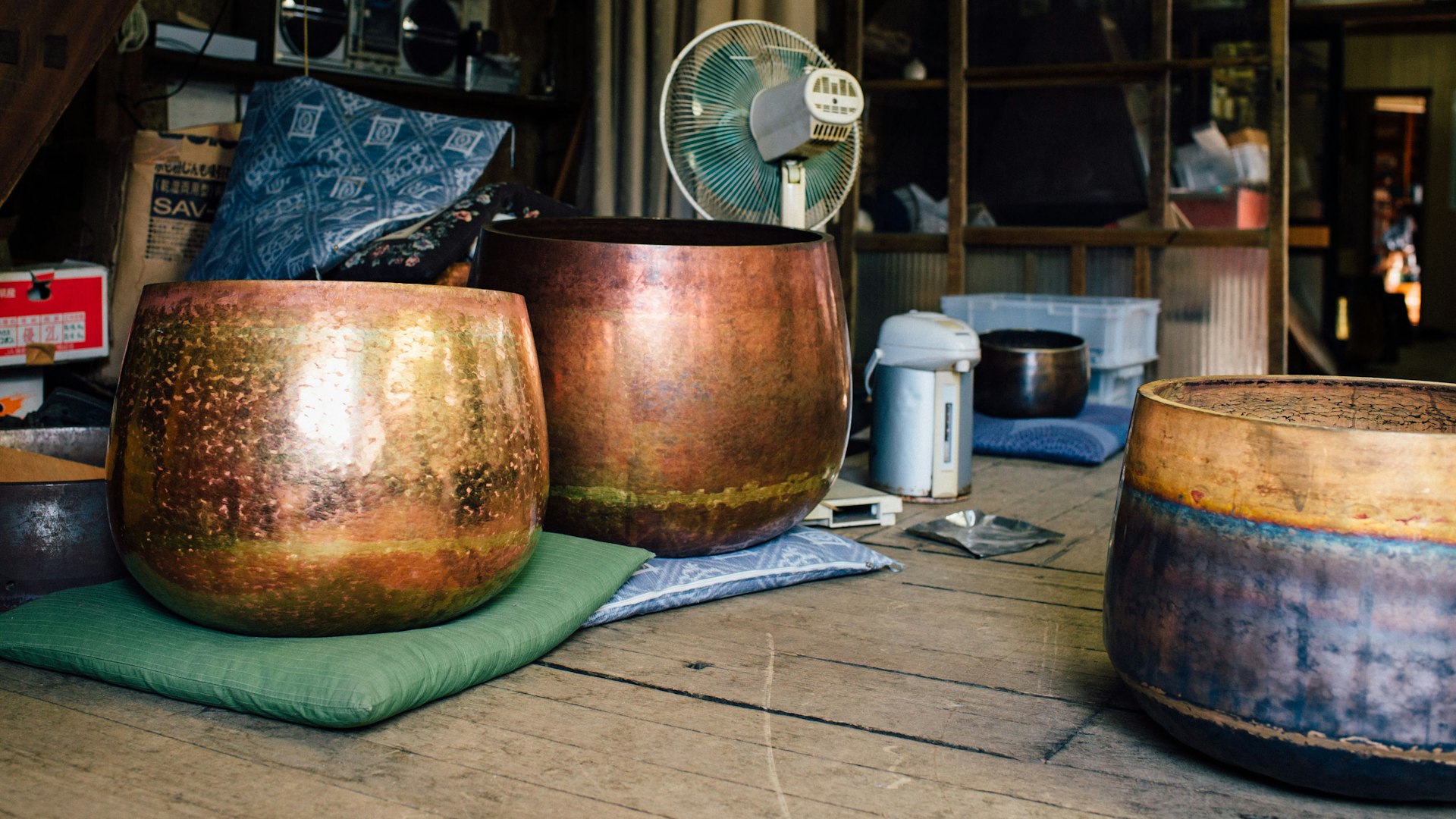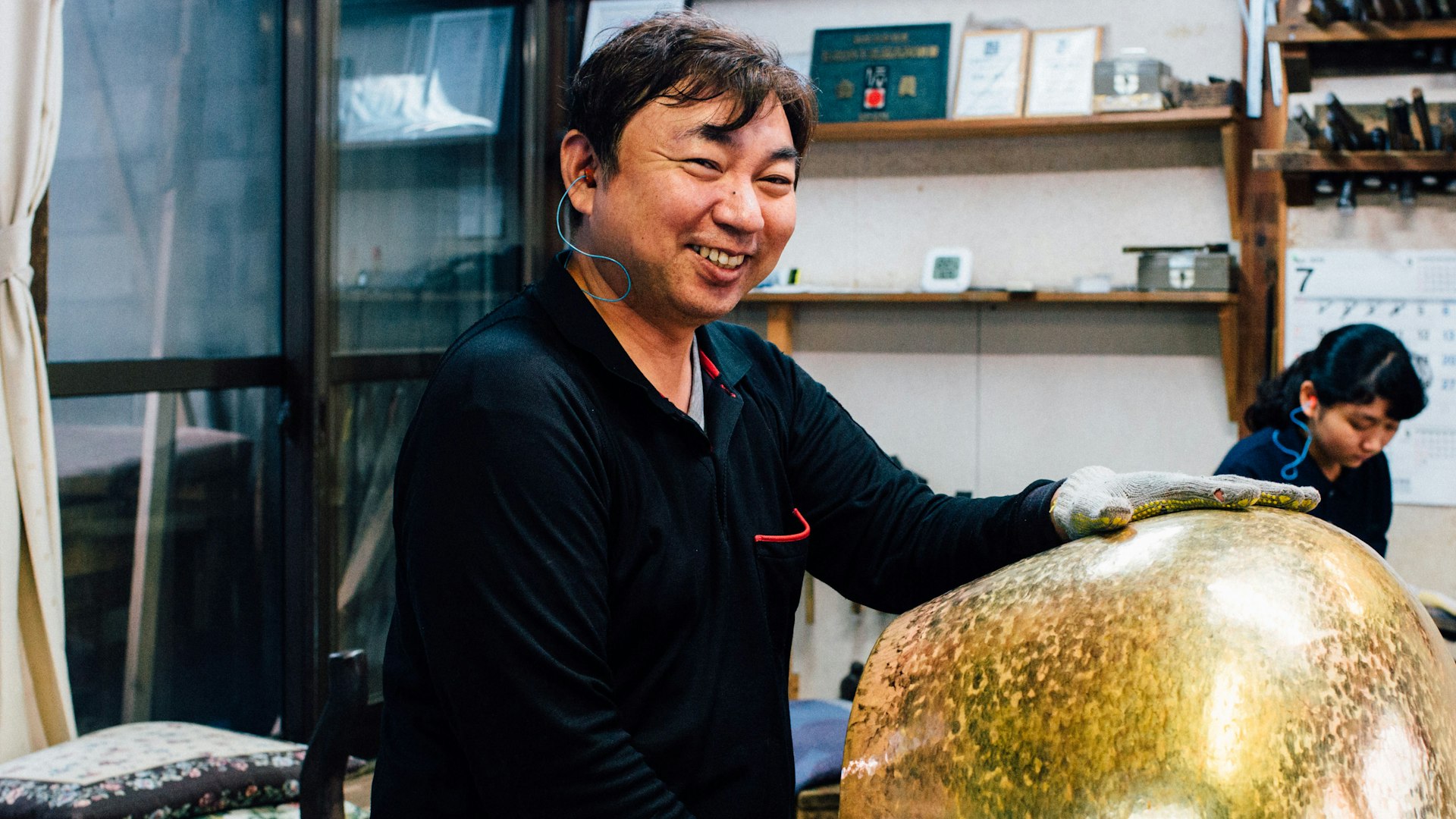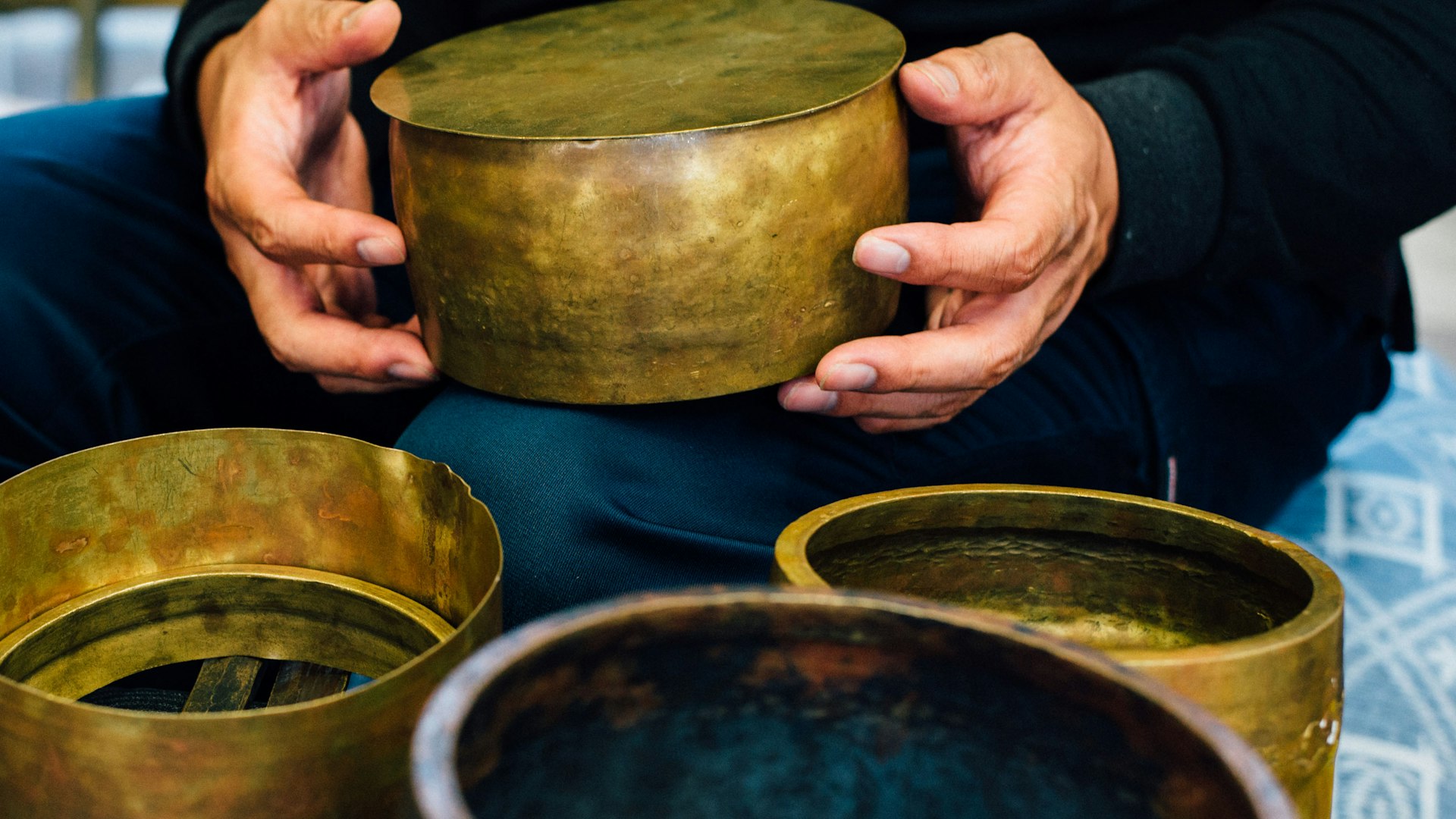January 24, 2025
The Art and Tradition of Japanese Orin Bowls: Exploring Craftsmanship, Culture, and Meditation
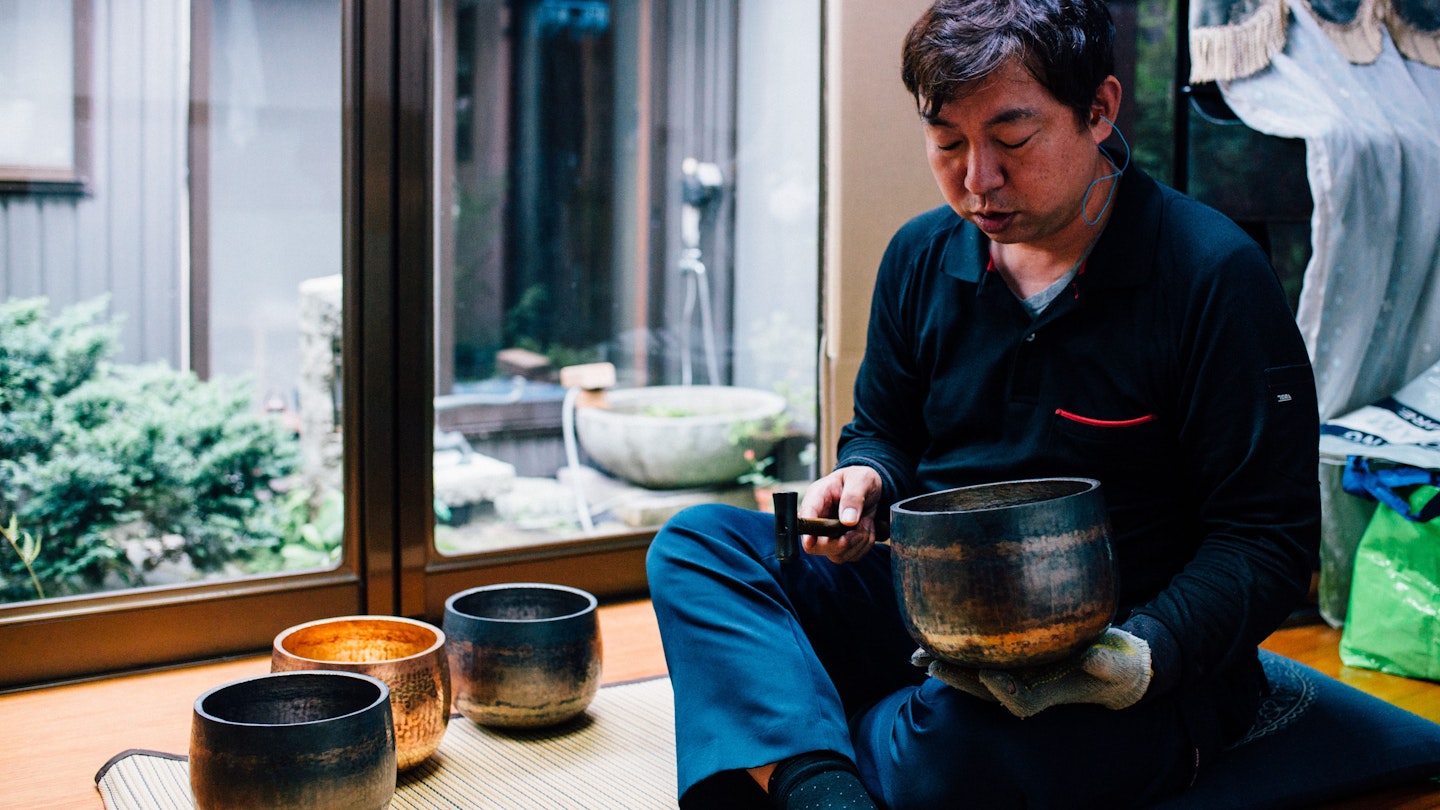
Japanese Orin bowls (おりん or 鉦鼓, pronounced "O-rin") are small, bell-like instruments deeply rooted in the spiritual practices of Japan. For centuries, their clear, resonant tones have been integral to Buddhist rituals, fostering a deep connection between sound, spirituality, and presence. Today, this timeless legacy is carried forward by master artisans like Yoshinori, a 4th-generation craftsman whose work bridges historical traditions with modern expressions of creativity.
From China to Japan: The Evolution of Orin Bowls
The story of Orin bowls begins with the migration of Buddhist rituals and artistry from China to Japan around the 6th century. Along with religion came the knowledge of bell-making, an art that Japanese craftsmen refined over centuries to create their own distinct style and sound.
Japanese artisans developed techniques to craft smaller, hand-held bowls that produced rich, long-lasting tones ideal for meditation and ceremonies. Over time, these bowls became a cornerstone of Japanese craftsmanship, reflecting Japan's emphasis on simplicity and subtle beauty, hallmarks of Zen and Japanese culture.
The Mastery of Japanese Orin Bowl Craftsmanship
At the heart of every Orin bowl lies an extraordinary dedication to craftsmanship. Traditionally made from Sahari, an alloy of bronze and zinc, The first step of making the bowls is bending the alloy. The second step is shaping and, and polishing with meticulous precision to produce their distinct tones. Every step, from shaping and bending and polishing, must account for factors like temperature, humidity, and even the season and soil conditions. This approach, slowly crafting from the earth up, is syncretic with the spiritual philosophies imbued in the process, emphasizing a profound connection between the craftsperson and their creation. First documented in 1843, this meticulous process ensures the bowls produce their signature chime, a sound that reverberates not just in the air but in the soul.
Yoshinori, a 4th-generation artisan whose family has been perfecting this craft for over a century, describes the process as “sculpting resonance.” His work draws inspiration from the tea ceremony’s minimalist elegance, creating pieces that embody wabi-sabi—the beauty of imperfection and transience. Each Orin bowl he crafts is a harmonious blend of tradition, spirituality, and artistry, offering a meditative connection to the earth and the philosophies it represents.
Orin Bowls In Japanese Culture: Rituals and Reflections
Orin bowls have long played a pivotal role in Japanese Buddhist practice, where they are struck with a wooden mallet or padded stick to mark transitions during meditative rituals. Their tones are believed to help practitioners focus their minds, clear distractions, and find inner balance.
Beyond temples, Orin bowls are cherished in Japanese households as symbols of tranquility and continuity. Traditionally placed on household altars (Butsudan), they hold a sacred role in honoring ancestors. In Japanese family life, ancestors are seen as present and active, their love and legacy shaping the household even after their passing. Striking the Orin is believed to call their spirits to join in prayer, creating a bridge between generations.
For those who are not religious, this ritual serves as a profound reminder of life’s fleeting nature and the lasting impact of seemingly small actions. Like the fading chime of the Orin, our time on Earth is finite. Engaging with this reflective practice offers a window into Japanese spirituality and family traditions while inviting deeper contemplation of our own lives.
How Orin Bowls Foster Mindfulness and Creativity
In Zen Buddhism, Orin bowls are struck to mark transitions in meditation and tea ceremonies, their resonant chimes promoting mindfulness and focus. The circular shape and fading sound symbolize impermanence (mujō), reminding us to embrace change and find beauty in life's transience. This simple practice encourages reflection, creativity, and presence.
Globally celebrated for their use in meditation and yoga, Orin bowls are often overlooked for their sacred, handcrafted origins. Made from sahari bronze, these bowls require exceptional precision and natural harmony, reflecting Japan’s tradition of crafting functional, beautiful objects imbued with spiritual significance.
Japanese aesthetics, such as wabi-sabi (the beauty of imperfection) and ma (the space between), influence many artists today. VAWAA artists like ceramicist Anastasia and printmaker Merlyn embody these principles, creating works that balance simplicity and complexity. Anastasia embraces 'accidents' in the studio, allowing cracks, uneven circles, and shifting textures to define her pieces. Merlyn captures fleeting moments, like dramatic ocean waves or bird murmuration, in bold yet delicate prints.
VAWAA textile artist Koko’s creations also reflect 'the space between,' with fibers and shifting colors evoking movement and transition. Her practice exemplifies Monozukuri—the holistic process of crafting from earth to loom. Koko sources her wool herself, carefully washing, carding, and foraging for natural dyes, a process that infuses her woven pieces with a tangible connection to the earth.
The Orin bowl offers not only a meditative sound but also a gateway to Japanese artistry, blending tradition and mindfulness to inspire creative and spiritual connection.
Crafting Resonance: Yoshinori, a 4th-Generation Orin Artisan
The craft of Orin bowl making, once passed down through family lines like Buddhist teachings, is now a rare art practiced by only about 10 masters in Japan. At VAWAA, we’re honored to offer mini-apprenticeship with Yoshinori, a 4th-generation master preserving and evolving this ancient tradition.
Following in his family’s footsteps, he has dedicated his life to preserving and evolving the art of Orin bowl making. Working with Sahari metal—a unique blend of bronze and zinc—he handcrafts each bowl to produce a sound that resonates with spiritual clarity. Beyond traditional Orin bowls, he is pioneering new applications of metalwork, including Suzugami, a revolutionary technique that transforms tin into ultra-thin, flexible sheets. These sheets can be folded and shaped like origami, yet retain incredible durability.
Inspired by Sadō, Japan’s tea ceremony traditions, Yoshinori fuses minimalism with timeless beauty. At his studio, VAWAA guests can witness this intricate process firsthand, exploring both the history of Orin bowls and the future of Japanese metalcraft.
Experience the Art of Orin Bowls with VAWAA
VAWAA invites you to immerse yourself in the artistry of Japanese Orin bowls with Yoshinori. This hands-on experience combines the technical mastery of metalwork with the meditative power of sound, offering a profound connection to Japanese culture, craft, and creativity.
Whether you seek mindfulness, artistic inspiration, or a deeper understanding of Japanese heritage, Yoshinori’s studio is a place where sound transforms into an unforgettable experience.
Explore all our curated artist apprenticeships worldwide and book one today.
Subscribe to our weekly newsletter to stay inspired with new artist stories and creative apprenticeships.
